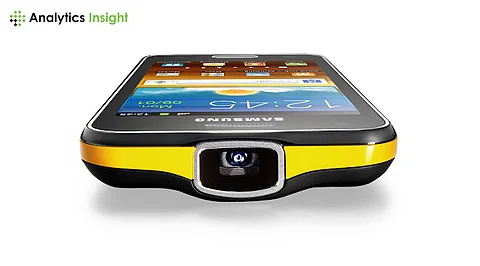

With the advancement of smartphones, from foldable displays to high-resolution cameras, there's a new trend that's on the rise: smartphones with built-in projectors. The idea is to make your phone a portable theater by projecting images and videos onto a wall or screen. But are they just a flashy novelty or a practical necessity? Let's explore this technology, its applications, and whether it holds a promising future.
Built-in projectors in smartphones use pico projection technology, which casts images using DLP (digital light processing) or laser projection. These tiny projectors can fit inside even the thinnest, most recent smartphone. Users can then project any number of visuals, from PowerPoint presentations to movies, on any flat surface. In general, built-in projectors offer resolutions between 480p and 720p, but some of the more expensive models offer resolutions up to 1080p.
1. Portable Entertainment: Imagine streaming your favorite series or watching a movie with friends anywhere without needing a TV or laptop. Smartphones with projectors provide an entertainment-on-the-go experience.
2. Business Applications: Professionals can use these phones for presentations during meetings, eliminating the need for bulky projectors or additional equipment. It’s a convenient option for sales pitches, quick team meetings, or client presentations.
3. Versatility: Built-in projectors enable users to share photos, slideshows, or even gaming sessions with a group. Some of the devices come with features such as auto keystone correction and focus adjustment for easy setup.
4. Space Saver: These smartphones eliminate the need for separate projection devices, saving both space and money, particularly for minimalists or frequent travelers.
1. Brightness and Battery Life: These projectors' small size restricts their brightness, making them unsuitable for bright rooms. Moreover, operating the projector consumes the phone's battery very quickly, thereby reducing its overall utility.
2. Image Quality: Though the technology is great, image resolution and sharpness usually lacking behind the standalone projectors. This can be a drawback for users who consider high-definition visuals important.
3. Cost Factor: Smartphones with built-in projectors are usually more expensive than the standard versions and may be out of reach for a budget-conscious buyer.
4. Durability and Heat Issues: The additional hardware does make these devices bulge and become hotter as well when using the projector for a long period of time.
Some companies have already entered this arena and presented some promising devices:
Samsung Galaxy Beam: Samsung's Galaxy Beam series was one of the first attempts at integrating projectors into smartphones. It attracted attention due to its novelty but could not gain much market share due to its low brightness and battery life.
Lenovo Smart Cast: Lenovo's Smart Cast concept phone featured a laser projector that could project a virtual keyboard or display videos. It demonstrated the potential of integrating projection technology with interactive interfaces.
Moviphone: A lesser-known contender, Moviphone featured a 50-lumen HD projector, allowing users to project a 100-inch screen. Its innovative design received praise but didn’t achieve mainstream success.
Whether smartphones with projectors are a fad or a necessity depends on the user. For tech enthusiasts, early adopters, and professionals, having a projector at their fingertips can be a game-changer. However, for the average consumer, the trade-offs in cost, size, and battery life might make traditional smartphones more appealing.
While this technology is still in its infancy, its potential cannot be ignored. As the quality of projection, energy efficiency, and compactness continue to grow, these devices could find a niche within the smartphone market. Moreover, their utility could further increase with the growth of work-from-home, on-spot presentations, and portable entertaining solutions.
There is a place for innovation, and there is a place for practicality, but smartphones, which have built-in projectors, take the middle ground. The integration of projectors into smartphones represents a crucial convergence of innovation and practicality. Although currently limited to niche use, these devices have tremendous potential for widespread adoption, driven by advancements in technology and decreasing costs.
